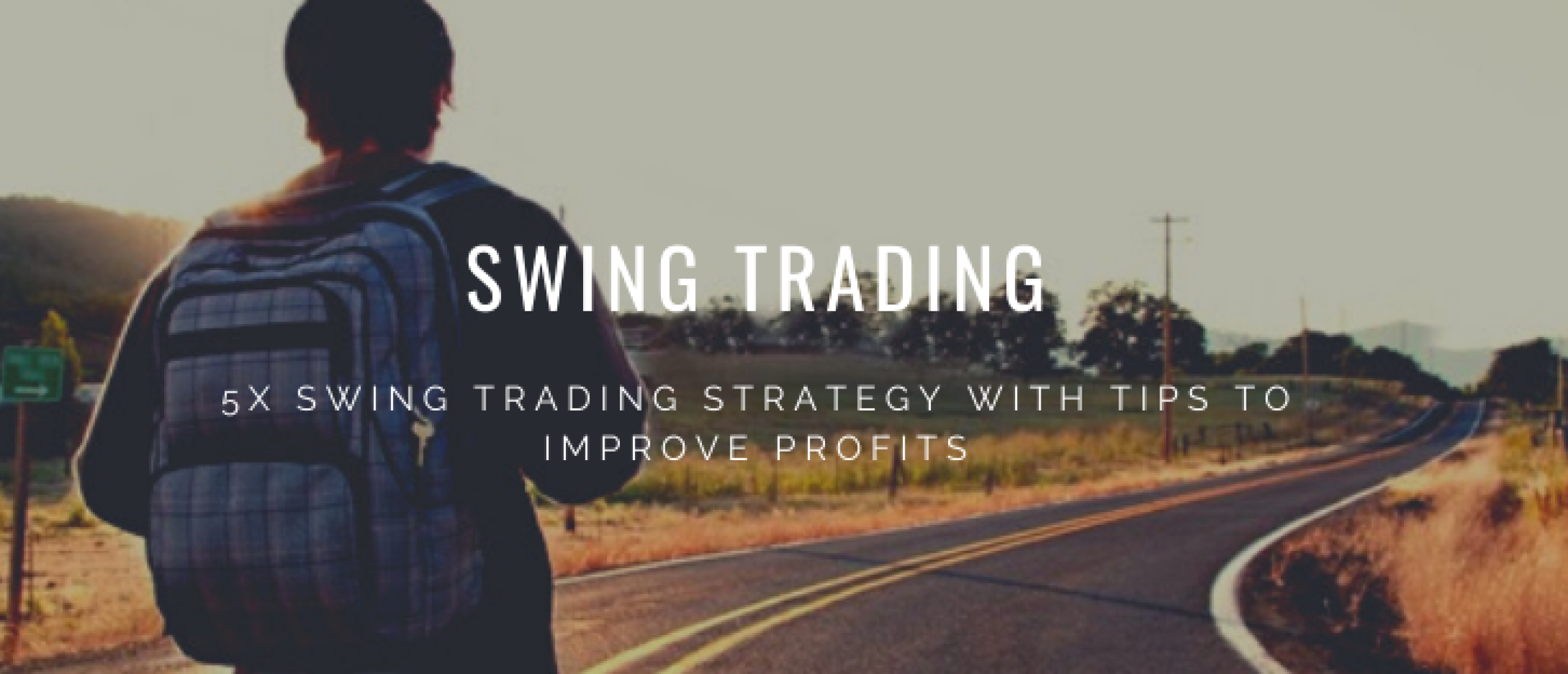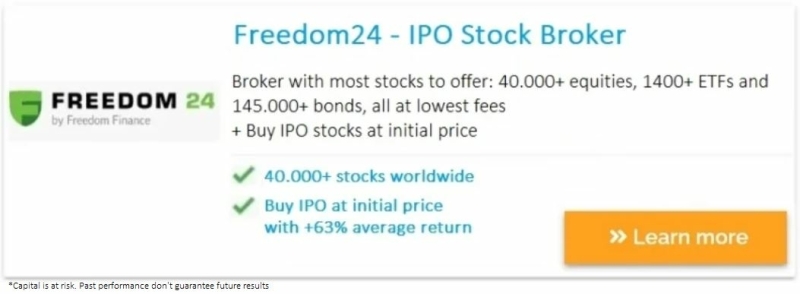Dear Happy Investor, swing trading is an active form of investing with frequent buying and selling based on rules of thumb and (technical) analysis. A successful swing trader achieves more profit, because she takes advantage of interim price movements. This applies to shares, crypto and forex. However, this form of trading also involves increased risk. In this article we discuss five swing trading strategies to reduce the risk. Specialize yourself in a swing trading strategy to increase profits.
On to sustainable (financial) success!
Swing Trading Strategy

We have summarized five swing trading strategies that you can use to identify trading opportunities. You can use swing trading techniques to look for potential entry and exit points in desired securities. In addition, you can use tools such as a pattern recognition scanner to identify securities that exhibit potential technical trading signals.
A swing trading strategy can be applied to investing in stocks, crypto currencies and forex. Our specialization is in equities. One application of swing trading is by trading based on momentum. Here's how it works:
- Buy the best stocks based on fundamental analysis and long-term outlook
- Follow the momentum and EPS revisions of each stock
- Buy partly on support lines and/or expected earnings growth
- Sell partly on resistance lines and/or overvaluation
Suppose you buy shares of a strong company with sustainable competitive advantage. Based on your research, you know that this stock has a fair value at a P/E of 15 (based on expected earnings growth). If the stock is buyable at a P/E of 15, but future earnings expectations are increasing (EPS revision UP), then that is a sign to buy in. Or suppose nothing fundamental changes, but the P/E rises to 25 because the market gets into this stock en masse. In this case it may be smart to take a partial profit, since the stock is in danger of becoming overvalued.
Below you will find five swing trading strategies that are more focused on technical analysis. They reinforce fundamental analysis.
1. Support and Resistance
Support and Resistance are the cornerstone of technical analysis and can be used to develop a successful swing trading strategy for financial instruments.
A support level is a price level/region on a chart that is lower than the current market price and where buying is strong enough to overcome selling pressure. Consequently, the price decline is stopped, and the price begins to rise again. As a swing trader, you want to initiate a buy transaction on the bounce of the support line, while placing a stop loss below the support line.
Resistance is the opposite of support. It indicates a price level or area above the current market price where selling pressure may exceed buying pressure, forcing the price to reverse its upward trend. As a swing trader, you might take a selling position on the bounce off the resistance level.
When integrating support and resistance into your swing trading strategy, keep in mind that when the price breaks through a support or resistance level it changes roles. What first was support becomes resistance, and vice versa.
2. Fibonacci Retracements
These patterns help traders identify support and resistance levels, and hence potential reversal levels, on any financial instrument charts. Stocks (and crypto) often retrace a specific percentage inside a trend before reversing. Potting horizontal lines on a financial instrument chart at the classic Fibonacci ratios of 23.6 percent, 38.2 percent, and 61.8 percent might reveal potential reversal levels. Prudent traders often look at the 50% level as well, even though it does not match the Fibonacci pattern since financial instruments tend to reverse after retracing half of the last move.
Suppose the price in a downtrend retraces and bounces off the 61.8 percent retracement level (acting as a resistance level). In that case, a financial instrument swing trader could enter a short-term sell position to exit the selling position for a profit when the price drops to and bounces off the 23.6 percent Fibonacci line (acting as a support level).
3. Channel Trading
This swing trading strategy requires you to identify a security that is showing a strong trend and trade within a channel. If you draw a channel around a negative trend on the chart of a financial instrument, you may consider selling when the price falls back from the top line of the channel. It is vital to trade with the trend when you use channels to swing trade. When the price is in a downtrend, you would only want to look for sell trades. Or you could wait for the price to break out of the channel and signal the start of an upward trend.
Within a swing trading strategy, channel trading and support/resistance are complementary.
4. 10- and 20-day SMA
Another popular swing trading strategy is SMAs. SMAs clean out price data by calculating a continually updating average price that may be taken across a range of specific time periods or lengths. A 10-day SMA piles up the daily closing prices for the previous 10 days and divides by 10 to calculate a new average every day. Every average is connected to the next to form a smooth line, which aids in removing 'noise' from a financial instrument chart. The length (10 in this example) may be applied to any chart interval, from one minute to weekly. SMAs with shorter timeframes respond to price changes faster than those with extended timeframes.
With the 10-day and 20-day SMA swing trading strategy, you have the opportunity to apply two SMAs of these lengths to your financial instrument chart. A buy signal is when the shorter SMA (10) crosses over, the longer SMA (20), indicating an upswing. A sell signal is when the shorter SMA crosses below the longer-term SMA, as this type of SMA crossover indicates a downward swing.
5. MACD Crossover
MACD Crossover is a relatively simple technique to enhance your swing trading strategy. The swing trading indicators are used for determining trend direction and reversals. The MACD is generated up of two moving averages - the MACD line and the signal line – and generates buy and sell signals when these two lines cross. If the MACD line crosses above the signal line, you should consider entering a buy trade as a bullish trend is indicated. A bearish trend is likely to be there if the MACD line crosses below the line, suggesting a sell trade. Before exiting the trade, a financial instrument swing trader would wait for the two lines to cross again, signaling for a trade in the opposite direction.
How to Increase Profits with a Solid Swing Trading Strategy

Here are some tips to improve your swing trading strategy for potentially higher profits:
- It is good to start with the market's primary and intermediate trends, which may give the context to make short-term trading decisions.
- Look for long trades during bullish periods and suitable short trades during bearish periods.
- When swing trading, don't rely exclusively on the primary trend since there will be periods when the intermediate trend turns positive and financial instruments soar.
- A two-year weekly chart is good for getting a sense of the overall picture. Examine the shares regarding a long-term moving average to determine the overall trend.
- Establish a stop-loss for each one before making the trade. Set this stop-loss with your broker if you aren't watching the market daily. If you're constantly watching it, maintain it as a mental stop – but make sure to execute it.
- Always treat lost trades as a learning experience and avoid revenge trading
Tip: with the best day trading brokers you'll find both a free demo account and tools for technical analysis and the like.
How to Reduce Risks at Swing Trading
Here are some tips to reduce the risk while developing your swing trading strategy:
- While attempting to minimize losses, bear in mind that you are trading with real money and assess how much of it you are willing to lose within a worst-case scenario. Placing limits should act as a guideline for how much you can afford to trade.
- To minimise your risk while swing trading, one of the most important things to learn is to read the charts and patterns.
- Have a Backup Plan
Our best tip regarding a swing trading strategy is to do it in a limited way. We prefer long term investing in unique companies. Simply by holding for the long term, you give companies the opportunity to grow. In time, the price will follow, and thus you realize positive returns. You can make risky investments with growth stocks, but it is probably much smarter to start with value investing. This lowers the downward risk, but offers the possibility of an above-average return (>15% on average per year).
You can combine a swing trading strategy with both stocks and crypto. However, investing in crypto is extremely risky. Pay close attention to what you are doing. With stocks, you can swing trade based on fundamental developments, such as earnings expectations. The techniques above can be useful in this regard. Look at monthly level, rather than daily level. And remember that you are buying shares of companies. You are investing in a company and its potential, not in the stock.
Questions or comments about swing trading strategies? Ask them in the comments below!





![TUI (TUI1) Stock Analysis: Price Target, Risks, Strategy [2022]](https://media-01.imu.nl/storage/thehappyinvestors.com/4861/tui-stock-analysis-2560x1100.png)



